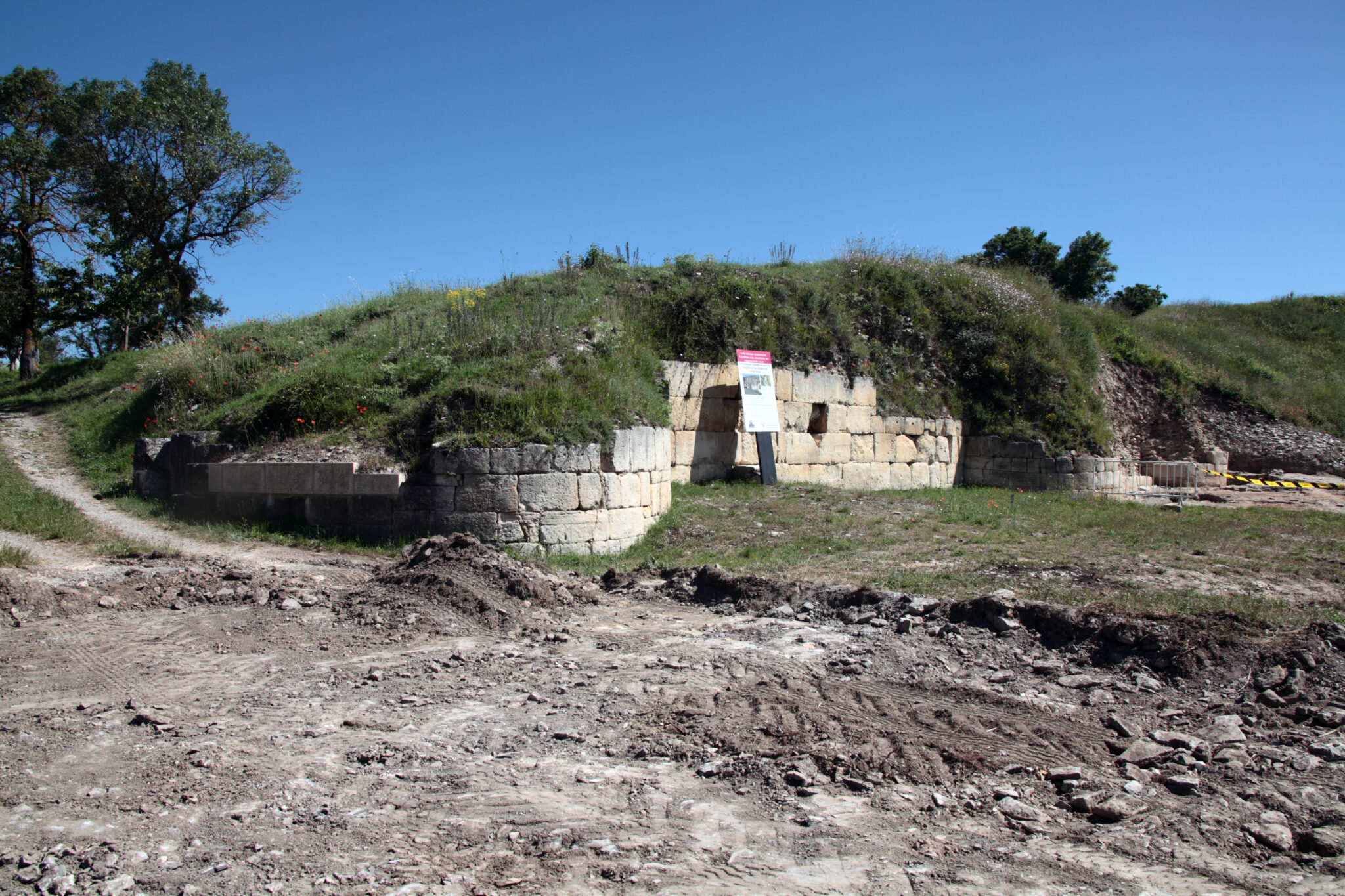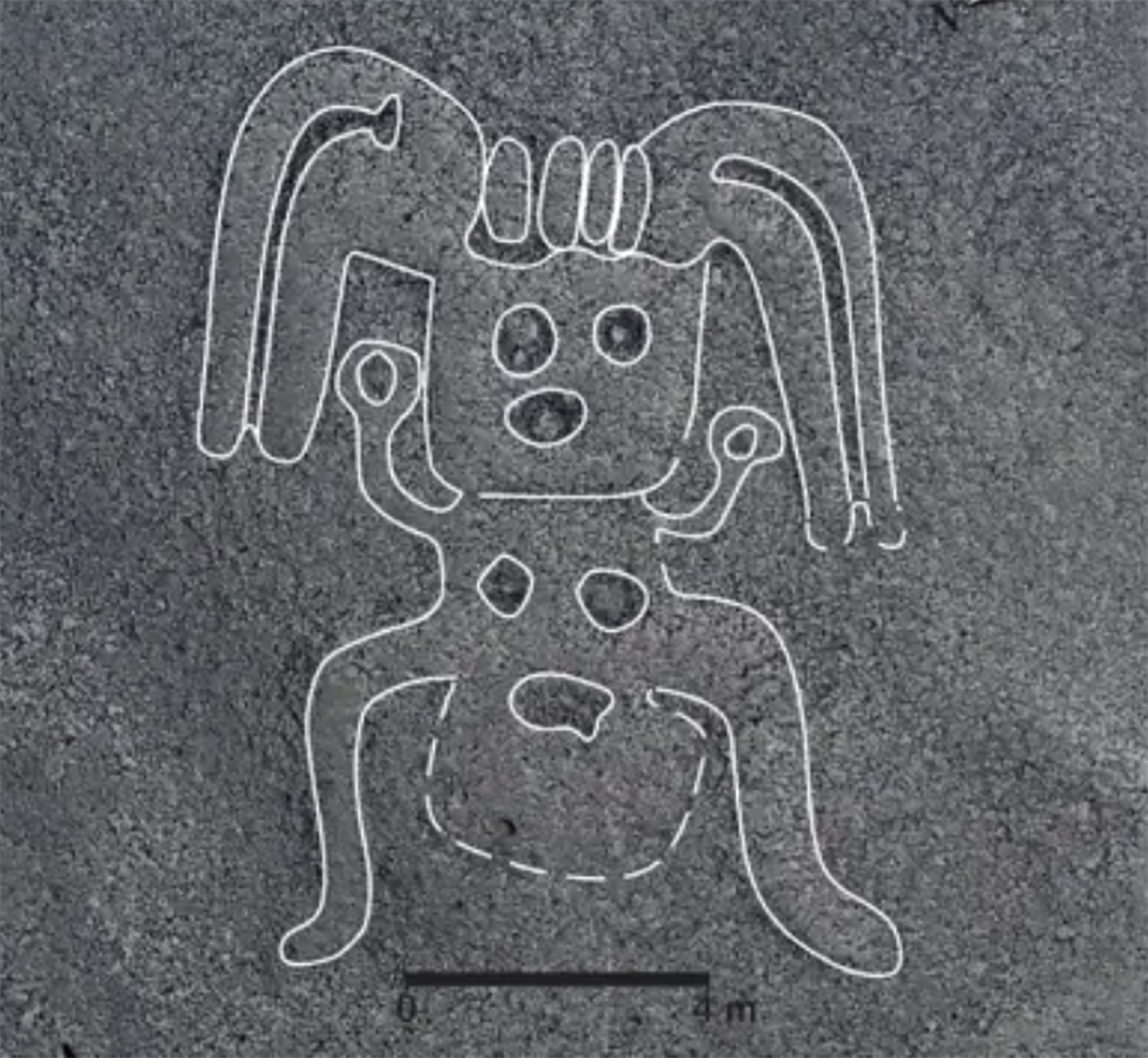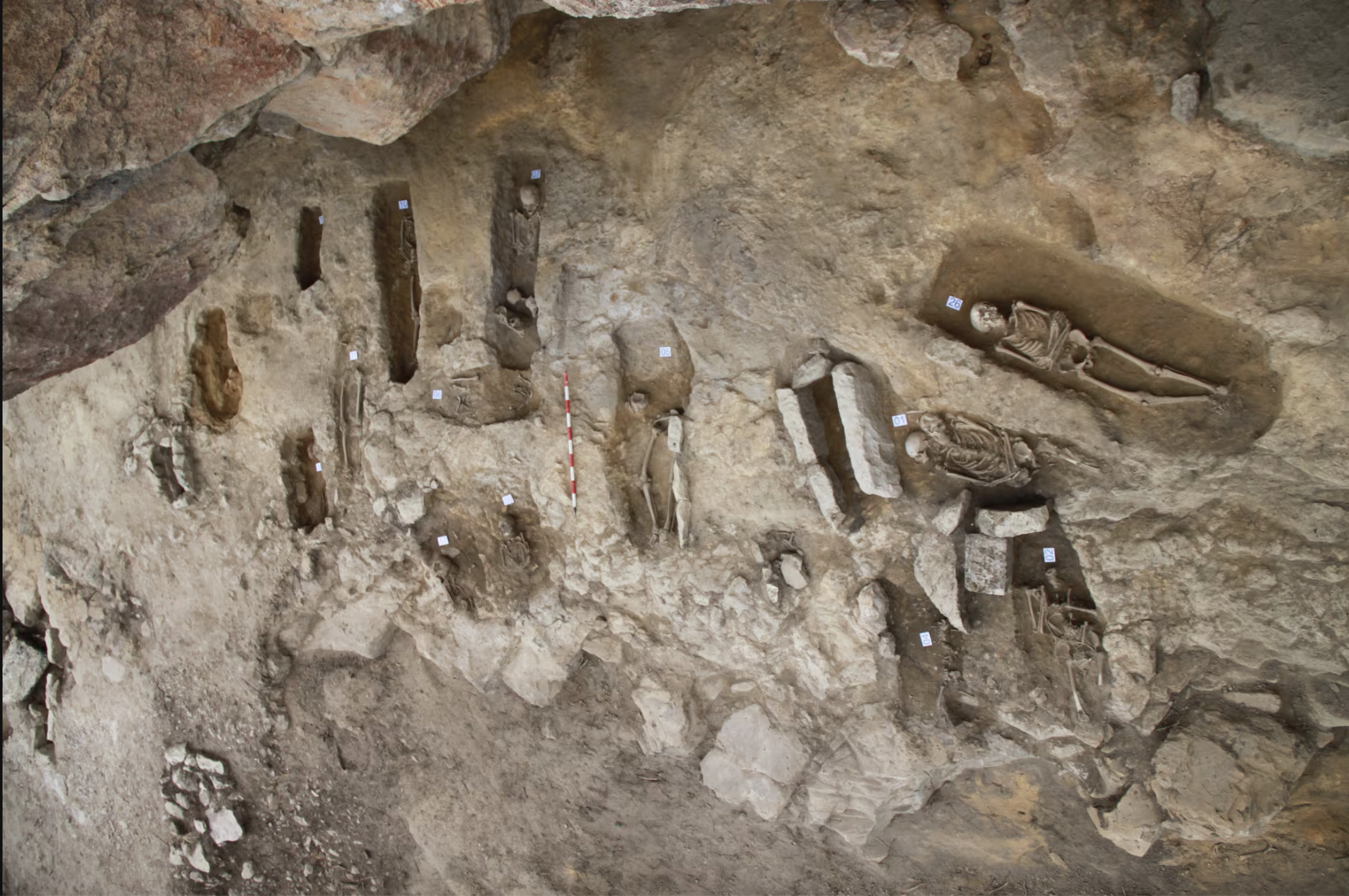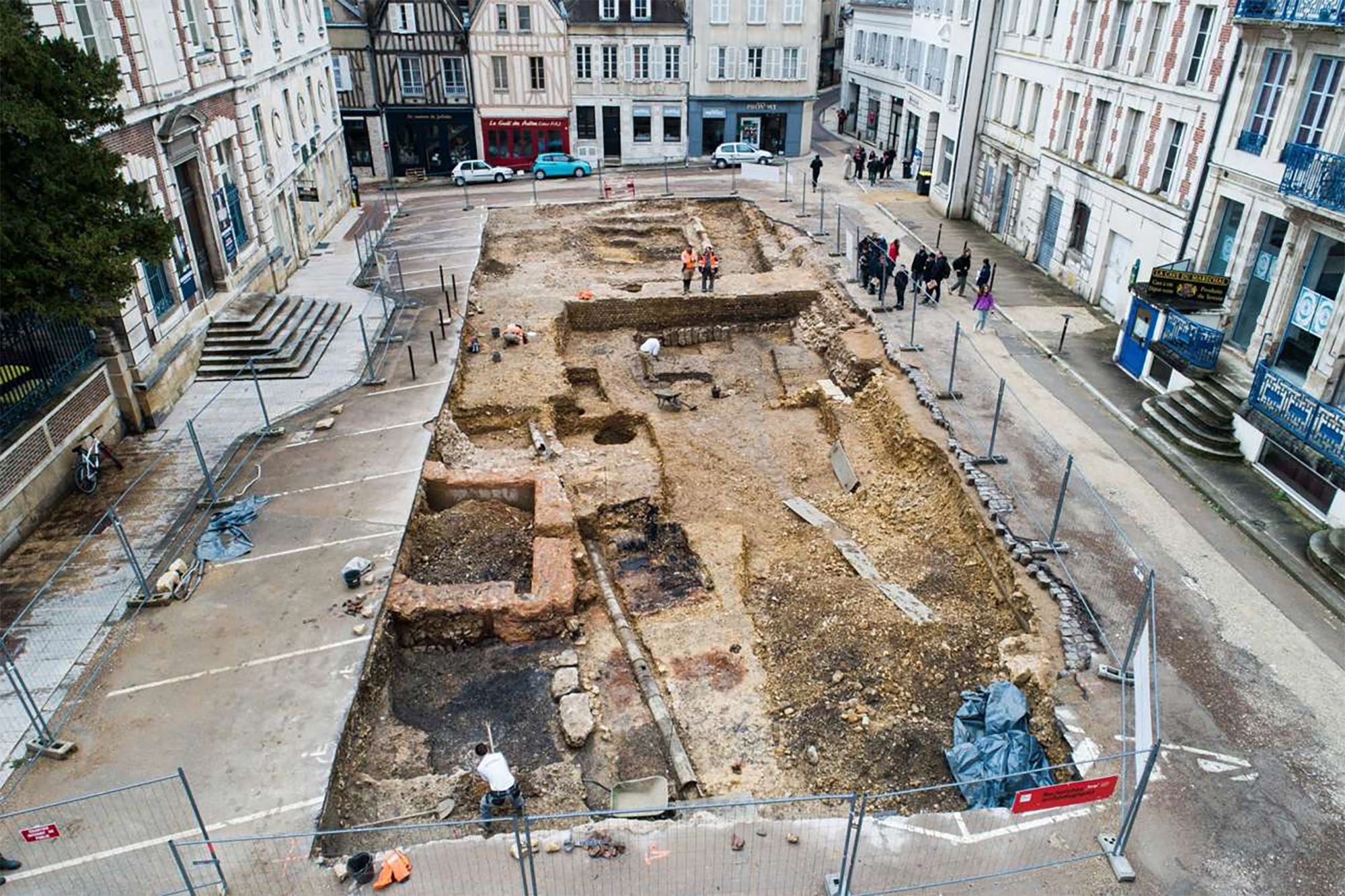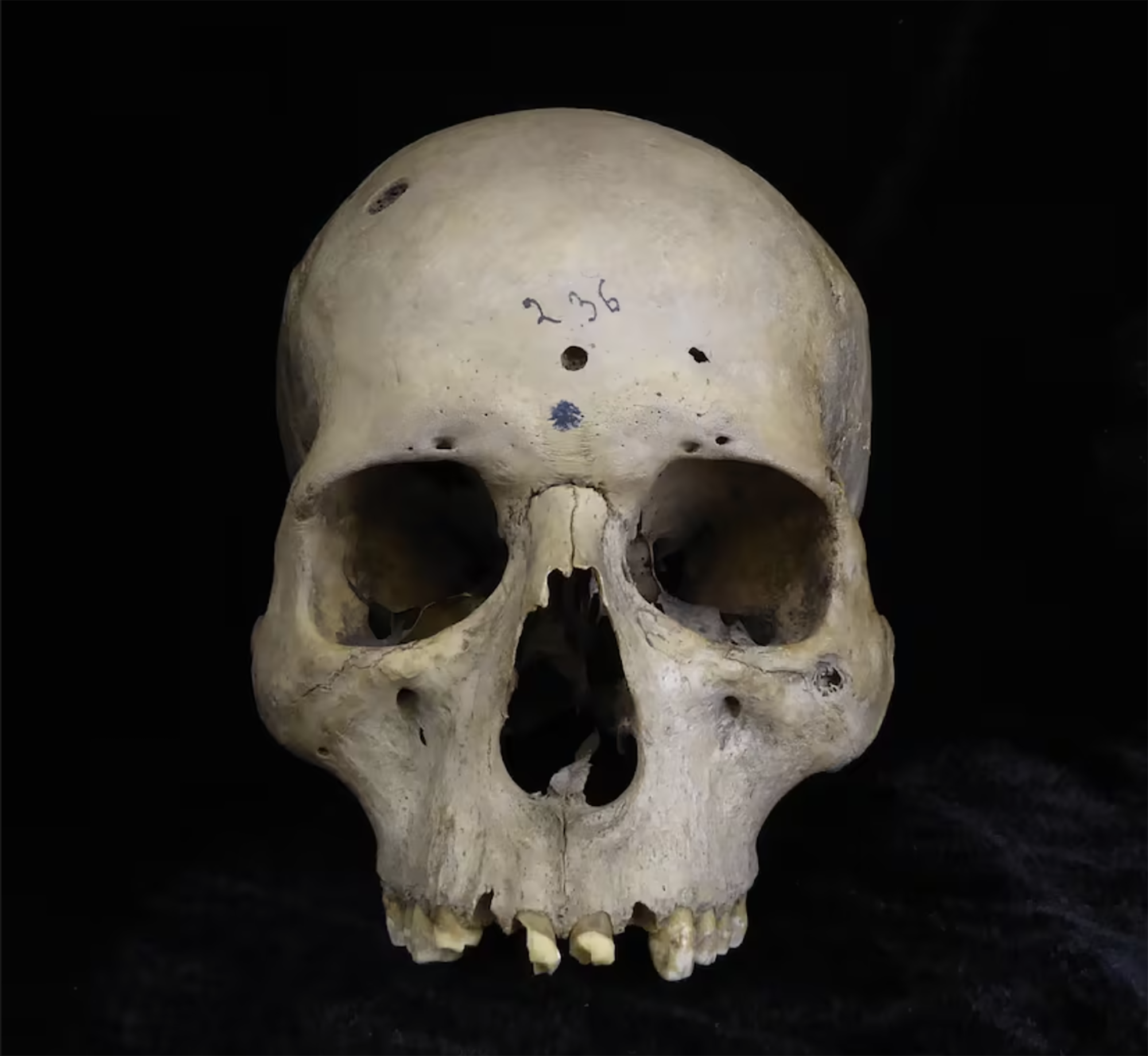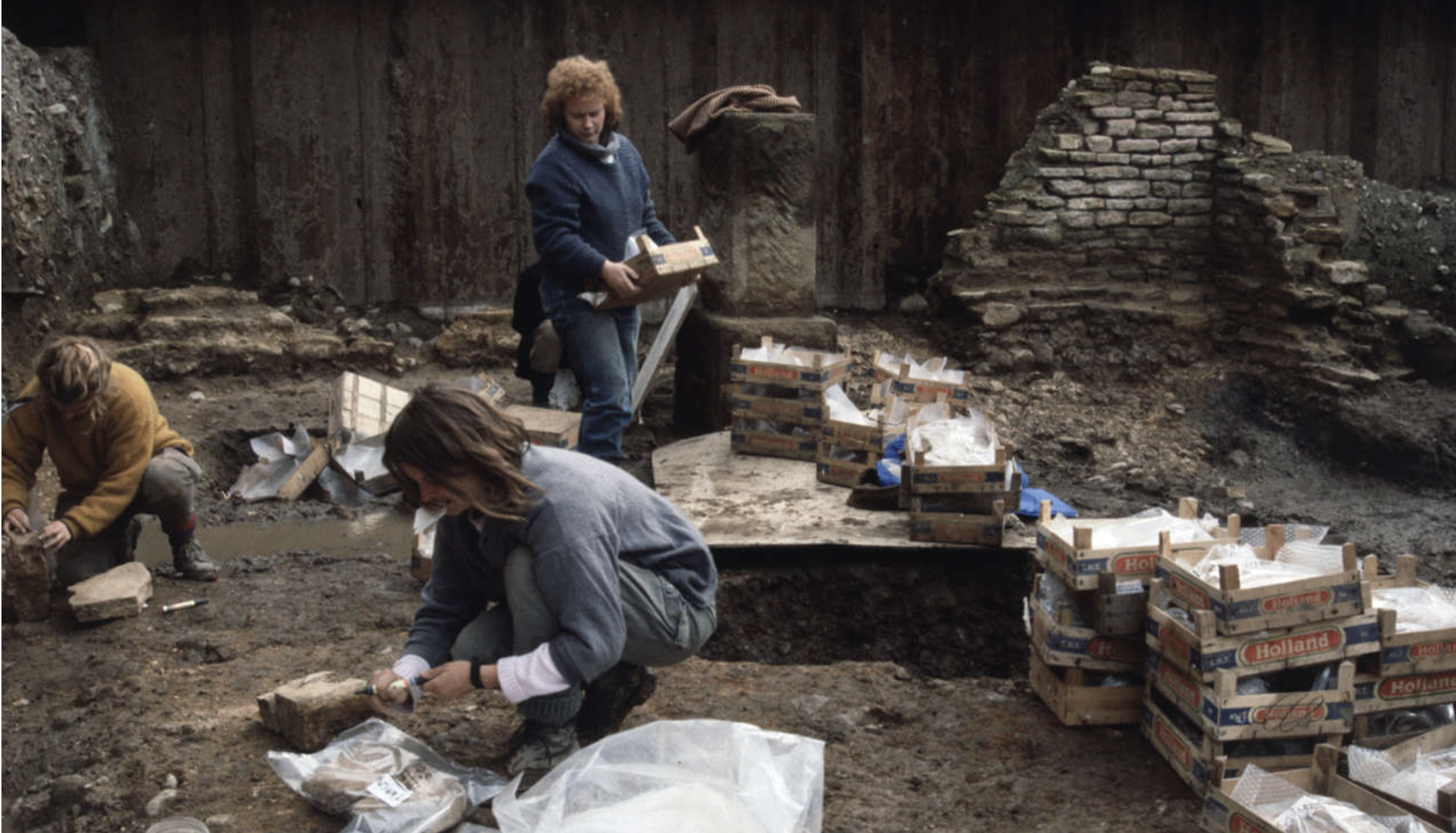Bad practices or archeological policy?

The Roman city of Santakriz is an impressive archaeological site located in Eslava, near Sangüesa. Apparently, there was a fortified people of the Iron Age, and then the Romans settled in the same place. Juan Castrillo, himself a priest of Eslava, gave the site for the first time in 1917. Since then, several campaigns have been carried out and since 2017 it has been excavated by a team from the Private University of Navarra, under the direction of the archaeologist Javier Andreu. It is a very productive site, as they have discovered large building structures underground. It seems that this was a promontory of the Roman era, although its name is not yet known.
There has been a great deal of controversy lately. We have recently learned that the Government of Navarre and the Prince of Viana Institution have withdrawn permission from those responsible to continue the excavation. It appears that some of the stones in the forum were moved with a large excavator, without prior authorisation being required. The extraction of these materials caused damage in some sillares or sillares. As a result, the Government of Navarra concludes that the team of archaeologists has performed "bad practices" and has withdrawn their permission to dig due to inadequate performance.
Those responsible for the site have complained. They say that the damage caused has not been so serious: Just a few “scratches.” They have also denounced that the Government of Navarre does not plan any action plan in the area and that, if the project is suspended, all the work done so far will be put to an end in vain.
In this sense, rumours and debates have been generated through social networks. Some have denounced that this is a political decision. Somehow, they've looked for an excuse to drive Opus Dei University out of the project. In addition, some have taken a tremendous whim and accused the government of intentionally interfering with the work of this research group, as they have not found writings in Basque or evidence showing the presence of vascones. Is it pure envy? This debate has come in one of the sweetest times of archaeology in Navarre, as recently the Society of Aranzadi Sciences has found in Irulegi and Larunbe old writings that could be related to the Basque Country.
Despite the nonsense, other experts have been in favour of the opinion of the Government of Navarra such as Teresa Lacosta Ramírez and Alex Duró Cazorla, members of the Platform of Professional Archaeologists of Spain (PEPA). In his view, the methodology used by Santakriz has been really inadequate and the decision taken is the right one. Because you can't act in any way with heritage. The errors that occurred in Iruña–Veleia cannot be repeated again and it is better to act prudently.
Martxoaren 30erako Iruña-Veleia martxan, SOS Iruña-Veleia eta Euskeraren jatorria elkarteek manifestaziora deitu dute, Aski da! Argitu, ez suntsitu lelopean. Azken bi urteetan "hondeatzaileak sistematikoki eremu arkeologiko oso aberatsak suntsitzeko modu... [+]
Ethiopia, 24 November 1974. Lucy's skeleton was found in Hadar, one of the oldest traces of human ancestors. The Australian hominid of Australopithecus afarensis is between 3.2 and 3.5 million years old.
So they considered it the ancestor of species, the mother of all of us. In... [+]
While working at a site in the Roman era of Normandy, several archaeology students have recently made a curious discovery: inside a clay pot they found a small glass jar, of which women used to bring perfume in the 19th century.
And inside the jar was a little papelite with a... [+]
A team of researchers led by the Japanese archaeologist Masato Sakai of the University of Yamagata has discovered numerous geoglyphs in the Nazca Desert (Peru). In total, 303 geoglyphs have been found, almost twice as many geoglyphs as previously known. To do so, researchers... [+]
Treviño, 6th century. A group of hermits began living in the caves of Las Gobas and excavated new caves in the gorge of the Laño River, occupied since prehistory. In the next century, the community began to use one of the caves as a necropolis. In the 9th century they left the... [+]
On August 1, a dozen people from the family were in Aranguren. Two young people from Aranzadi made firsthand the excavations and works being carried out in Irulegi. This visit is highly recommended, as it reflects the dimension of the work they are doing.
Halfway, at the first... [+]
In the desert of Coahuila (Mexico), in the dunes of Bilbao, remains of a human skeleton have been found. After being studied by archaeologists, they conclude that they are between 95 and 1250 years old and that they are related to the culture of Candelaria.
The finding has been... [+]
This winter the archaeologists of the INRAP (National Institute of Preventive Archaeological Research) have found a special necropolis in the historic centre of Auxerre (French State), a Roman cemetery for newborn babies or stillbirths. - Oh, good! The necropolis used between... [+]
Two years ago, the Catalan archaeologist Edgard Camarós, two human skulls and Cancer? He found a motif card inside a cardboard box at Cambridge University. Skulls were coming from Giga, from Egypt, and he recently published in the journal Frontiers in Medicine, his team has... [+]
York, England, 2nd century. Various structures and houses were built in the Roman city of Eboracum. Among others, they built a stone building in the present Wellington Row and placed an arch in the wall that crossed the Queen’s Hotel. Both deposits were excavated in the second... [+]








